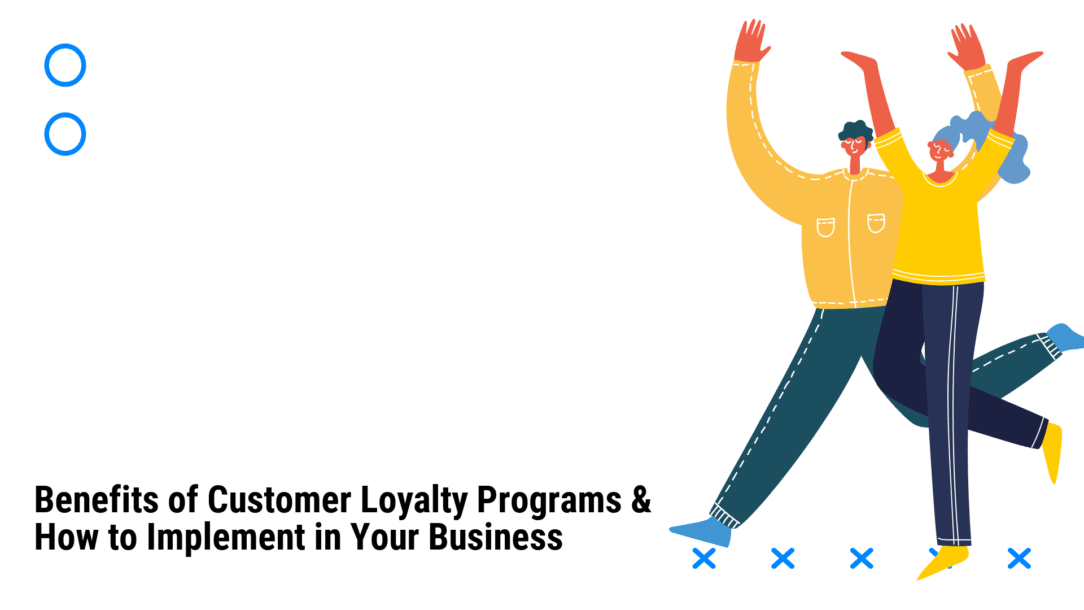How valuable are your existing customers? How much do you spend on acquiring new customers? What is the return on investment (ROI) for your advertising dollars? If you want to know these answers, you should look into customer loyalty programs. Customer loyalty initiatives can help boost your average transaction value, purchase frequency, and product sales. This, in turn, increases your profits and allows you to focus on expanding your business.
What does a business want? To increase sales, minimize costs, and maximize profits. It’s a no-brainer that businesses want to increase their sales, but how? Many businesses opt to increase their spending on marketing, which increases their sales. But when they put too little (or no) focus on customer retention, that can have an adverse effect as the business loses the customers that they worked to gain in the first place.
In today’s competitive market, customer retention strategies are essential for businesses to help maintain and grow their profits.
What is a Loyalty Program?
What is a loyalty program? It’s an incentive program that rewards customers for their patronage, ideally resulting in higher profits and long-term customer retention. A customer loyalty program lets you collect data about your customers’ purchases, preferences, and demographics. In fact, more than 90% of the companies have loyalty programs.
According to the latest research, 68% of consumers will prefer to join the loyalty program of the brand they like, and even 56% claimed they would buy from the brand they want no matter if there are cheap options available.
Check the actual stats from Yotpo:
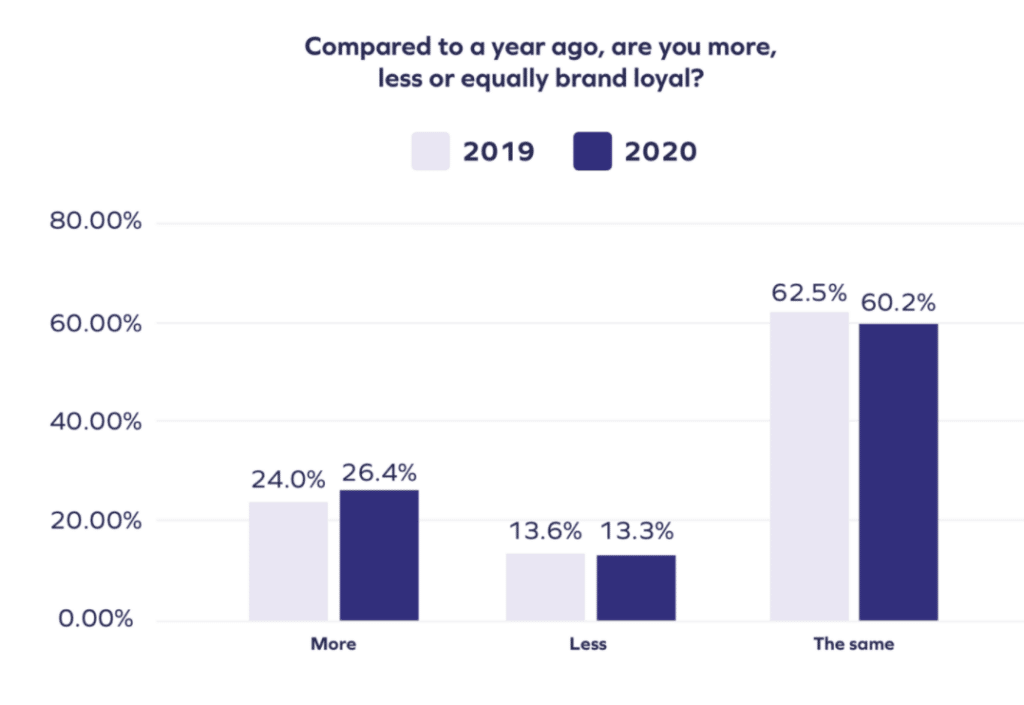
Yotpo Statistics
However, before going into your specific situation, let’s understand why customer loyalty is essential and how it can impact your business.
What Exactly is a Customer Loyalty Program?
A customer loyalty program rewards your best customers, keeping them coming back again and again. A good one will increase customer retention, attract new customers, and increase your bottom line. Customer loyalty programs can help retailers retain existing customers and bring new business through targeted promotions.
Customers Loyalty Programs: What Do the Statistics Say?
- Only US has more than 3.3 billion customer loyalty memberships
- Approximately 84% of the loyalty program members have made a redemption from the brand they follow
- 18% of the loyalty program members do participate in the program that they follow
- At least 15% of the consumers interact with their favorite loyalty programs
- Research say 49% of the consumers have at least 3 loyalty programs and follow them
- Only up to 8% of the consumers say loyalty program does not influence their purchasing decisions
- 50% of consumers join a program to earn more points and make more purchases
- At least 44% of the members say they were satisfied with the loyalty program they are part of
- 47% of Gen-Z says they are ready to pay to upgrade their loyalty program
These stats tell you the importance of implementing a customer loyalty program for your business. When you implement a successful loyalty program, the benefits are endless. You don’t have to figure out how to increase revenue and decrease spending all by yourself, you can learn from the businesses that have already done it.
Let’s understand what benefits a customer loyalty program has to offer:
What are the Benefits of the Customer Loyalty Program?
Customer loyalty programs can provide a number of benefits to your business. You can see increased sales and increased profits. Businesses can identify their most profitable customers and find ways to reward them. Long term, a customer loyalty program can help retain your existing customers and attract new ones. Loyal customers are less price-sensitive, have higher revenue per visit, and purchase more frequently.
1. Less Time Spent on Marketing Efforts
Loyalty programs make marketing efforts much easier because you’re not trying to bring in new customers all the time. People who join a loyalty program are already your customers, so they’re more likely to shop with you again. Maintaining a great relationship and consistent customer service across the board is key.
2. Less Time Spent on Incentives
Traditional coupons, discounts, and sales are great ways to bring in new customers. However, they require a lot of time and effort, especially if running a business with multiple locations.
Business owners can spend hours creating coupons and posting them on social media. Not to mention, you also need to do this for every location. You don’t have to spend all that time and effort on a loyalty program. In fact, you mustn’t do it because you’d be neglecting your current customers, and they’ll go elsewhere to shop.
3. Maximized Return on Investment (ROI)
Customer loyalty programs provide a huge ROI for retailers, especially those with multiple locations.
Most customers don’t live close to every location, so they’re more likely to visit convenience stores. With a loyalty program, they can earn redeemable points at all locations. So, if the customer lives near two locations, they’re more likely to visit both stores.
4. Enhanced Customer Experience
The more customers feel satisfied with their experience, the more likely they will stick around. A customer loyalty program can also help build customers’ trust in your company because it encourages them to keep coming back.
5. Repeat Business With Loyal Customers
Many loyal customers expect to be rewarded for choosing your business. Offering an incentive program is a great way to thank existing customers and encourage them to continue choosing your business. According to the latest insights, more than 80% of customers stick to a brand that has a loyalty program.
6. Reduction In Costs Per Customer
When you reward customers for their loyalty, they will be less likely to switch to a competitor. This means you can reduce your customer costs and save on marketing and advertising costs. Customers claim that earning points in a loyalty program helps them change their shopping behavior.
7. Increases the Average Transaction Value (ATV)
Offering incentives can encourage customers to purchase more items and spend more money. This, in turn, increases the average transaction value and ultimately the profit margin of each and every sale. The research found that 49% of consumers will make more purchases after joining a brand loyalty program.
8. More Referrals
The loyalty program also increases the opportunity to do better business. In a loyalty program, you can provide discounts to your customers for referring their friends and family. In this way, you can get more opportunities for doing business. With this, you can increase your sales opportunities and overall revenue.
9. Brand Advocacy
When you implement a loyalty program, customers are more likely to recommend your business to their friends and family. They already trust your store or brand because they get the reward for choosing your business. Brand advocacy will lead to more business and sales for your business.
Customer loyalty programs also help reduce customer attrition since loyal customers become more attached to your company and are less likely to shop with your competitors.
10. Reducing Slow Seasons
In a slow season, customers still need groceries and other necessities. A loyalty program can encourage existing customers to come back to your store during this slow season. They can redeem points to purchase necessary items and reduce slow seasons.
But the thing is: How do customer loyalty programs work? How exactly do they increase your ROI?
Here are the 7 basic steps to understanding how a loyalty program works.
- Start with building a relationship with your customers through a personalized message
- Deliver a relevant, timely offer to encourage them to come back and purchase more
- When they come back, reward them with a thank-you gift for their return visit
- The more they come back and purchase over time, the higher the reward they accumulate
- The customer can then redeem their reward in the form of a meaningful gift or discount to continue building loyalty with your store
- The more a customer shops with your store, the higher their status becomes and the more rewards they accumulate
- To further engage customers, you can also run contests to increase engagement and encourage referrals
The point is that it works by delivering a personalized message, offering a relevant and timely offer, following up with customers when they come back to your store rewarding them, and then following up again. The more they return, the more rewards the customers receive. This increases customer loyalty and brings them back to your store over and over again.
Which businesses can benefit from customer loyalty programs? What are the best places to implement a loyalty program?
Customer loyalty programs can benefit a wide range of businesses. This is why it’s essential to focus on your individual target audience and make decisions based on their specific needs. If the benefits of a loyalty program are proven to benefit your business, then you can always consider implementing a loyalty program.
Following are the Best Places to Implement a Loyalty Program:
Manufacturers & Retailers
Some of the biggest beneficiaries are retailers and manufacturers. These can benefit from increased sales, higher customer retention rates, better product positioning, and a boost in customer loyalty. Retailers might also be able to use data collected from a loyalty program to market directly to their customers. The most prominent example is Amazon Prime. Amazon Prime is a subscription service. You get access to free 2-day shipping and discounted 1-day shipping.

Amazon Prime
It also offers other benefits such as instant streaming for certain TV shows and movies, unlimited storage on Amazon Drive, or exclusive deals.
Amazon Prime has several benefits such as free shipping and discounts. However, Prime’s real benefit is the fact that it encourages customer loyalty. It encourages customers to come back and purchase more. This means a steady flow of revenue, reduced expenses with shipping costs, and a boost in customer retention rates.
Service Businesses
Retail isn’t the only industry that can benefit from a loyalty program. Service-oriented companies also have the potential to enhance their sales by implementing a loyalty program. Usually, these types of companies can benefit from customer retention and acquisition.Take the example of Qatar Airlines Privilege Club, the world’s most extensive frequent flyer program.
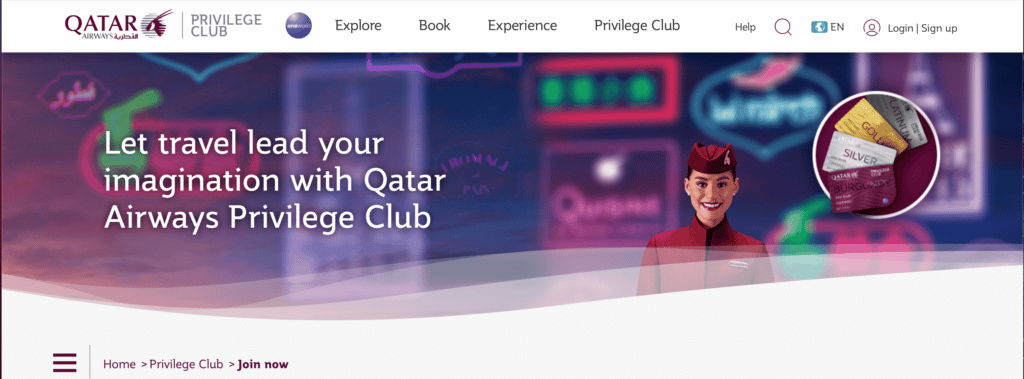
Qatar Privilege Club
Qatar offers its Privilege Club members both miles and tier status. With this in place, the airline has the ability to reward different types of customers with different benefits.
Small & Medium Businesses (SMBs)
These types of businesses can also benefit from customer loyalty programs. For example, they allow your customers to have a hassle-free customer experience, which can help you obtain return customers. Usually, return customers spend more on average, and they’re less likely to switch brands.
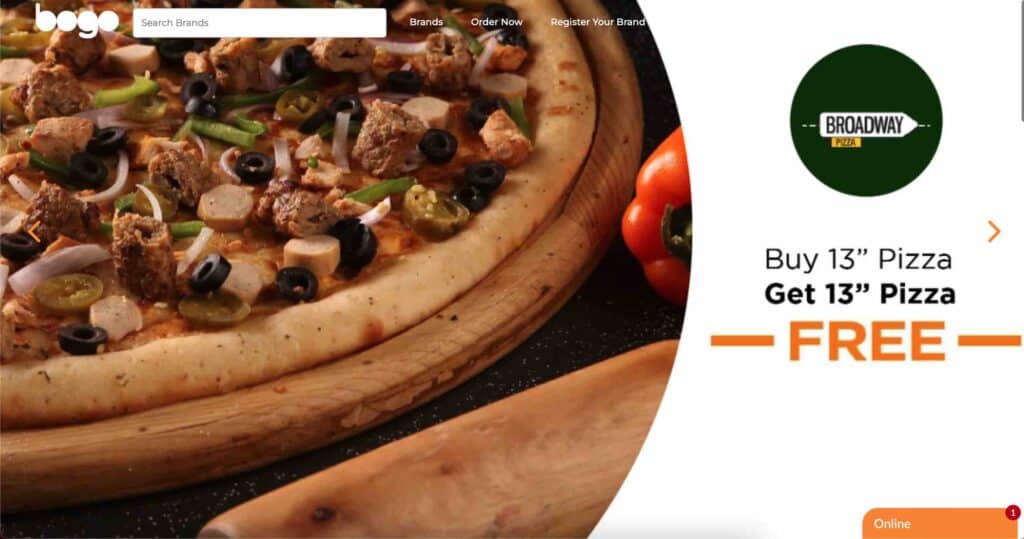
Broadway Pizza BOGO
Take the example of the BOGO loyalty program:
They collaborate with thousands of brands and bring in exciting offers so that customers always have a reason to come back and shop through them.
This program is perfect for attracting new business increasing sales and is beneficial for business owners.
Restaurants, Food & Beverage
Loyalty programs are also an effective way for restaurants and bars to get new customers. They also come with an added perk of boosting word-of-mouth referrals. Some of the most popular loyalty programs belong to bars and restaurants.
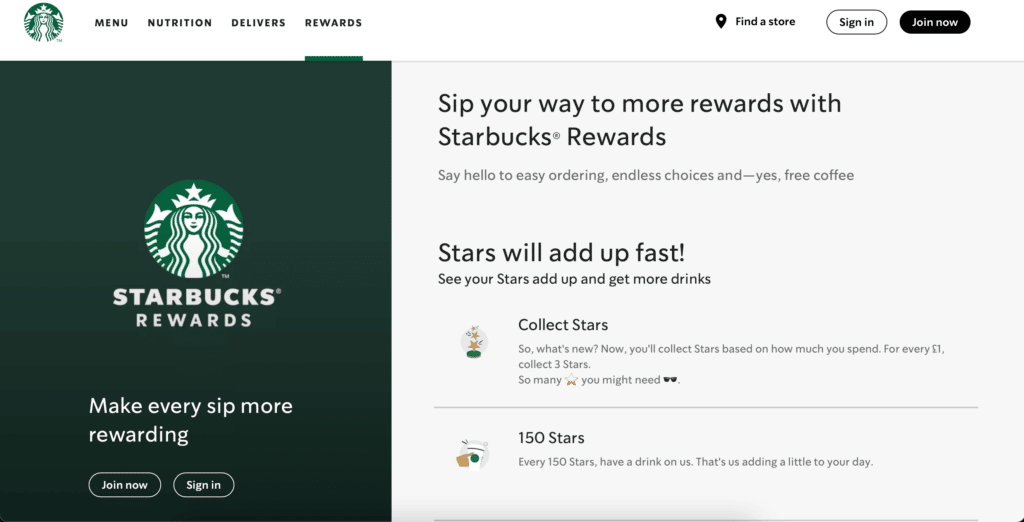
Starbucks Rewards
For instance, take this example of Starbucks:
Starbucks is one of the most popular places to get coffee, and they know this. They also understand that customers return for their product again and again, but they want to enhance the experience. With each eligible purchase made at Starbucks, customers earn rewards. As they accumulate more points, they move up levels within the program and unlock perks such as free in-store refills or other special offers.
This rewards program has been a huge success for Starbucks. They’ve reported that more than 24 million people have joined the program since it was first introduced. Their loyalty program is the biggest reason why Starbucks’ same-store sales have grown for 15 consecutive quarters.
Customer loyalty programs can help retailers retain existing customers and bring new business through targeted promotions. The goal of a loyalty program is to encourage customer spending by offering rewards for repeat purchases.
How to Implement a Customer Loyalty Program?
Many of you might be thinking about how to implement a customer loyalty program. And what are the different ways of doing it?
The most common idea is to offer your customers an incentive to spend more on your products. You can offer rewards such as discounts, coupons, loyalty points, etc. Also, you can run campaigns to increase brand recognition. A customer loyalty program can do wonders for your bottom line, but it’s essential to follow the proper steps when developing one.
Building a loyalty program involves five basic steps:
Writing Your Objectives:
The first step of building a loyalty program is to make it clear what your objectives are. Try to avoid casual decisions and be specific about the problems you are trying to solve. For example, if your problem is increasing revenue per customer, then writing an objective might be something like this: Increase average order value by XX% from customer loyalty program participants within three months.
Know Your Customers:
A loyalty program is a customer-centered strategy. So, first of all, you need to learn about your customers. Learn their needs, wants, and how they think about your products or services. Once you know the exact things required to have loyalty from your customers and develop a loyalty program that fulfills their attracts your customers towards you, it will become easy to achieve customer loyalty.
Defining the Program:
Now that you’ve identified the specific problem you’re trying to solve, it’s time to define your program. Marketers must choose a program that fits their business goals and strategy. For example, you may want to consider the following questions:How frequent should point accrual be?
What should the reward be for each point? How much will the rewards cost to produce and distribute?
Launching Your Program:
After all the prep work has been done, it’s time to launch your program. It’s essential to prepare a marketing plan and a reasonable timeline for your program. Marketing is a massive part of your program launch because you need to communicate your new loyalty program with customers. This marketing will help drive brand awareness and create a positive buzz about your program.
Give More Rewards:
If you are not giving rewards with your products or services, then it’s time for you to give more rewards to your customers. Give rewards as a token of appreciation for their trust and loyalty towards you. Give them some incentives to feel valued and continue doing business with you.
Change the Incentive:
In most cases, customers usually feel bored after receiving a reward. They want something new and innovative to attract them to your brand. So, if you’re not giving rewards or incentives, then change the incentive so that they feel interested in what you are giving them.
Develop an App:
You can develop an app through which customers can get notifications about your new products and services. In addition, you can ask them for their feedback on specific topics through this app. This will help you to engage with them and make them feel important.
Customize the Program:
If you want to develop a strong connection with your customers, it’s time to customize your loyalty program according to their needs. Customize the program according to their wants and bring something unique for them.
Give Timely Rewards:
Delay in giving rewards and incentives can make customers feel disappointed about your product or services.So, it’s better to give them rewards on time. This will help you build a strong relationship with your customers, and they will continue buying your products.
Tracking Results:
In the early stages of your customer loyalty program. You want to make sure that your program is achieving the desired results, and you also need to find a quick way to identify whether or not you’re on the right track.To do this, marketers should measure four key performance metrics:
- Reach – how many target customers are aware of the loyalty program?
- Interest – how many people join the program?
- Spend – what’s the conversion rate?
- Retention – how many people are re-engaging with the program?
Measuring Success:
Once you’ve achieved the expected results, it’s time to measure your success. You want to quickly identify whether or not you’re on the right track and how your program is doing over a long-term period. Also, you need to look at how successful your competitors are with their loyalty programs. If you’re not seeing growth, it’s time for a marketer to rethink their loyalty strategy. However, it’s good to set time-bound targets and measure your results on a weekly or monthly basis to adjust and tweak the program to make it better. Loyalty programs can be expensive, particularly if running a rewards-based program. Make sure that you make a budget and manage your expenses according to it. You need some funds at the early stage of your program to effectively promote it and get more customers to join it.
Conclusion
To conclude, customer loyalty programs are the best way to attract customers to you. You can make them feel important by developing a customized program according to their needs and giving them some rewards to show your appreciation towards them.
Besides, you can quickly measure the results of your program and take the required steps to make it better according to the needs of your customers. So, these are some of the steps you can take to develop an effective customer loyalty program for your small business. If you follow these steps, it will be straightforward to build a strong relationship with your customers.
However, it’s important to note that every business is different. The time frame for achieving results also varies depending on what kind of product or service you’re offering to your customers. Make sure that you set realistic goals instead of creating high expectations that might disappoint your customers.
Related Posts

